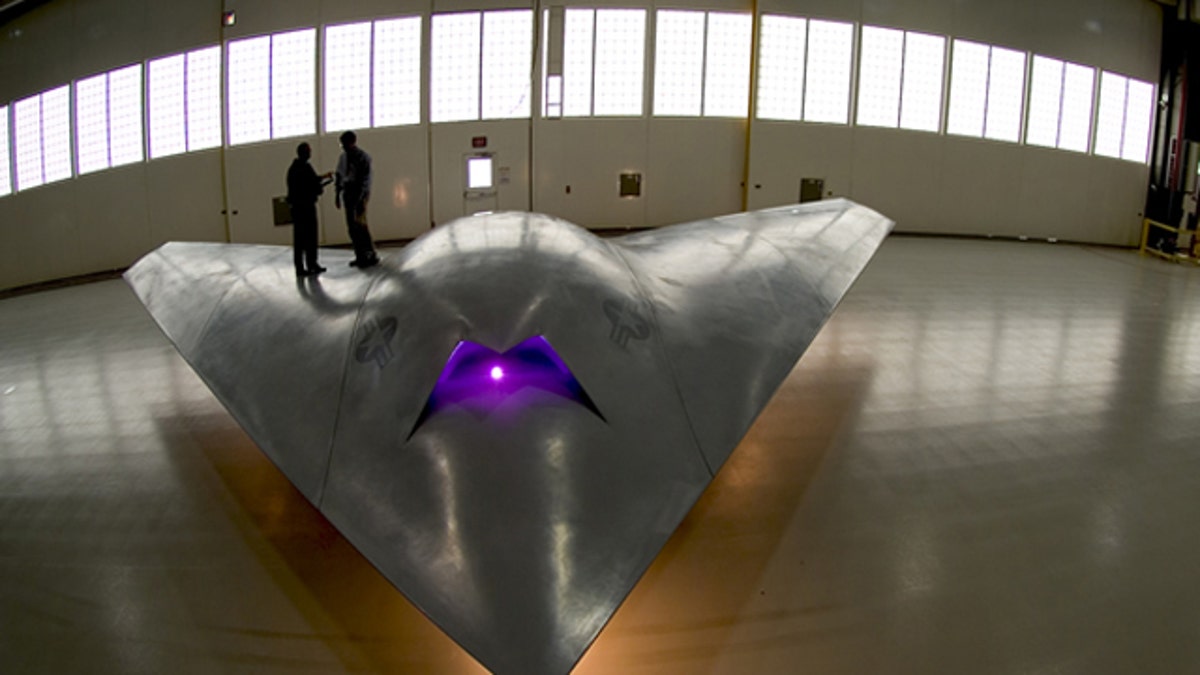
(Boeing)
The U.S. is investing billions of dollars in drones, the unmanned aircraft that are key to the modern military. With names like Sky Warrior and Vulture, these radar-proof spy planes can stealthily track -- and secretly kill -- terrorist targets.
The only problem: The enemy has them, too.
No fewer than 44 other nations, from Israel to Austria, are developing their own squadrons of unmanned aerial vehicles (UAVs). The friendly skies may soon be getting crowded.
Click for a glimpse of the wide world of drones
The Pentagon's current fleet of killer and recon drones includes several craft with exotic names: The Predator -- one of only two major U.S. unmanned systems that carry weapons -- the Reaper, the Hunter and the Global Hawk. Made by General Atomics and Northrop Grumman, these planes are essential to current military operations.
"The Reaper provides the best combination of lethality and persistence that's so valuable to commanders," said Gen. (Ret.) John P. Jumper, former Air Force Chief of Staff. "We've come a long way." But according to the Pentagon, the future promises even deadlier versions of these drones.
The Future of UAVs
The Phantom Ray, by Boeing, is a good example. This prototype jet-powered flying wing has morphed into a test bed for advanced UAV technologies, including electronic warfare tools like radar jamming, autonomous aerial refueling, air-missile defense and surveillance. Engineers expect it to fly as high as 7.5 miles straight up. And with an anticipated cruising speed of up to 610 mph, the Phantom Ray will be one of the fastest UAVs on record.
The Demon, under development at the BAE Systems laboratory in London, flies with no fins -- since the entire body of the craft is shaped like a wing. Dozens of thrusters situated on its top and bottom shape airflow, replacing the work typically done by tail fins and ailerons. On-board software varies the strength of each thruster to control pitch, side-to-side movement, or yaw, and roll.
The Vulture, by Lockheed Martin, is envisioned as a replacement for small, geostationary satellites, a UAV that can stay aloft for a stunning five years. Its suite of day-and-night cameras can scan a 600-mile swath, sending data back to handlers on the ground.
Read More: The Future of Unmanned Military Drones
"A strike with an unmanned drone carries less weight in the public perception," said Jamey D. Jacob, an associate professor in mechanical engineering and drone expert at Oklahoma State University. "It also allows more dangerous strikes, since the loss of a pilot is avoided at all costs."
That's just one reason the White House is increasingly relying on the technology as part of its war strategy in Afghanistan and elsewhere, boosting last year's $3.5 billion budget for UAVs by nearly 50 percent. Drones were the big technology winner in this year's defense budget, and the Pentagon plans to have 65 unmanned aircraft flying at any one time by 2015.
That's a significant increase over the 40 continuous UAV "orbits" currently in the air, and it illustrates Defense Secretary Robert Gates' emerging plan to increase the Air Force drone fleet in heavy use over Iraq and Afghanistan.
The technology in drones has evolved quickly, says Lt. Gen. David A. Deptula, the Air Force's Deputy Chief of Staff for Intelligence, Surveillance and Reconnaissance. He compares the technical innovation required to weaponize unmanned aircraft to the engineering accomplishments of people such as the Wright Brothers.
A Brief History of Drones
After the 9/11 terrorist attacks, Congress directed the Air Force to order two pre-production drones for testing, hoping to advance the technology. On Oct. 17, 2003, the Reaper made its debut flight from the General Atomics facility in California.
Eventually, the drone was employed in Operation Enduring Freedom. The aircraft flew 14 missions for the Department of Homeland Defense during October and November 2003, and was the first Reaper to fly in Afghanistan. In four years, it flew 3,266 combat hours and 254 combat sorties.
Now other nations are emulating the success that the U.S. has had with the drones, and are incorporating them into their defense networks. This month, Israel formally disclosed its own drone program, four years after first testing it. The Israeli drone is aimed at intimidating Tehran, and projecting Israel's power across the Gulf, without harming its pilots.
"The Israelis have been working on it for some time," Nathan Hughes, a military analyst at D.C. intelligence firm Stratfor, tells FoxNews.com. "It was used as a surveillance asset over Gaza last year in Operation Cast Lead. The capability is akin to that of a Predator. It has a similar size and performance."
Foreign governments are increasingly relying on the technology, as unmanned drones represent less of a threat to "airspace sovereignty" than piloted aircraft, Oklahoma State's Jacob says.
"It limits the political fallout," he told FoxNews.com.
